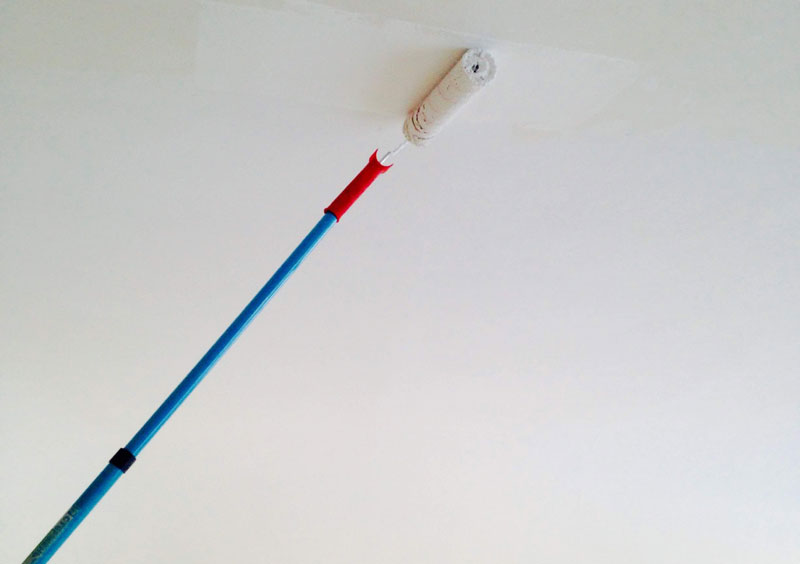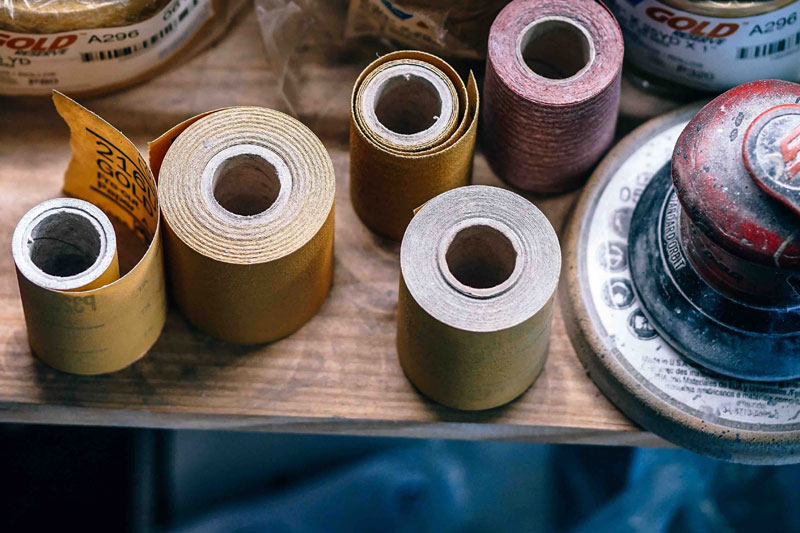A to Z guide to painting terms

Planning a painting project in Brisbane? Whether you’re tackling it yourself or bringing in local pros, it helps to understand the lingo. From undercoat to topcoat, this A to Z painting terms guide will help you make sense of the most common industry terms—so you can feel confident and in control before picking up a brush.
Painting terms: A to D

Blisters: these form when paint does not adhere properly, causing paint to bubble and flake.
Acrylic
Acrylic paint is water-based paint that is also water resistant.
Adhesion primer
Use this primer on trick-to-paint surfaces, such as tiles.
Bagging
A sand and cement mixture that's applied to brick.
Binder
An oil-based primer that is used to bind powdery paint.
Blistering
When bubbles form on dried paint. Blistering is usually caused by moisture or dirt stuck beneath the paint. Avoid by cleaning surfaces thoroughly and allowing them to dry completely before painting.
Brush
Paintbrushes are used to apply paint to surfaces. You can purchase brushes in all shapes and sizes, depending on the size material of your surface.
Brush marks
Brush marks refer to the visible lines left by paintbrush bristles in dry paint.
Caulking
The process of waterproofing gaps between building materials with a filler.
Ceiling white
A white paint created specifically for ceilings
Cut in
A technique that uses the brush to paint around the edges of a surface.
Drop sheet
A fabric or plastic sheet is placed over the floor and/or furniture to stop paint drops or spatter from landing on it.
Painting terms: E to K

Extension poles: used to extend the reach of your roller.
Enamel
A paint that creates a smooth, hard, often glossy finish. Usually used on trim and woodwork.
Epoxy enamel
A protective and corrosion-resistant paint that's used on metal surfaces that does not need a primer.
Etch primer
A primer for smooth metal.
Extension pole
A pole used to extend the reach of a roller fits for painting ceilings and the tops of walls.
Exterior paints
Paint specially formulated for outdoor use. These are UV and weather-resistant, and typically do not need a primer.
Fading
The loss of colour pigmentation in paint due to sunlight or weathering.
Flaking
Paint that peels off a surface. Flaking is usually caused by blistering (see above).
Gloss
How shiny a paint is. Gloss levels are referred to as matt, low sheen, satin, semi-gloss, and high gloss.
High gloss
The shiniest gloss level. This paint is hardwearing and easy to keep clean.
Hue
Another term for colour.
Intercoat
Paint applied between the primer and topcoat. It improves adhesion and builds film thickness for durability. Learn more about intermediate coating systems from Dulux Protective Coatings.
Painting terms: L to O

Neutral colours: think whites, tans, browns, greys, and stones.
Lacquer
A clear and protective finish that's commonly applied to wood.
Laying off
Running your painting tool over freshly applied paint to give it a uniform appearance.
Lead-based paint
Some older paints contain high levels of lead. These can be health hazards; working with and removing lead paint requires specialist procedures.
Load
To add more paint to a brush or roller.
Low sheen
Low sheen refers to the gloss level of a paint. Low sheen is not shiny and is generally used of interior walls.
Masking
The process of covering areas in tape or paper that are not to be painted.
Matt
The lowest level of gloss.
Nap
The length of fibres on a paint roller.
Neutral colour
An inoffensive colour that is neither bright or strong, such as white, stone, beige, and grey.
Oil-based paint
Paint constituted of pigments suspended in a drying oil.
Opacity
How see-through a paint is. The opaquer, the fewer coats required.
Painting terms: P to S

Sandpaper: used to create a smooth surface prior to painting.
Paint pads
An alternate paint applicator.
Pigment
The material added to paint that gives it its colour.
Primary colours
Red, yellow, and blue. These colours cannot be created by mixing other colours.
Primer
The first coat of a paint job that protects the surface and ensures proper adhesion.
Primer-sealer
A primer that also seals the surface.
Re-coat time
How long it takes for a coat of paint to dry and harden, so that it can be painted over.
Render
A smooth sand and cement coating used on bricks.
Roller
A versatile paint applicator available in many widths and materials.
Sanding
Using sandpaper, sanding smooths a rough surface before painting commences to ensure a uniform topcoat.
Satin
A gloss level similar to semi-gloss (see below).
Sealer
A substance that is applied to porous surfaces to create a stable base for paint.
Semi-gloss
A middle-of-the-road gloss level.
Solvent
The substance used to dissolve paint. The solvent for acrylic paint is water, and for oil-based paints is turpentine.
Stain
A product that adds colour to wood but doesn’t hide the texture. Must be followed by a protective coating, such as varnish.
Stripping
The removal old paint.
Painting terms: T to Z

Varnish: a hard, shiny, protective finish.
Tacky
Paint that’s not yet dry, and still feels a little sticky.
Thinner
A substance that makes paint runnier and easier to apply.
Tint
The material added to base paint to create the final colour. Paint colours are formed using varying quantities of tints.
Tone
A colour variation achieved by mixing grey with the original colour.
Topcoats
The final coat.
Touch-up
Using small amounts of paint to repair damage or chips to a finished paint job.
Turpentine
The solvent for oil-based paints. Sometimes referred to as turps.
Undercoat
Paint applied after the primer but before the topcoats.
Varnish
A clear, hard, and durable finish.
Water-based
Acrylic paint that can be cleaned and diluted by water.
Whitewash
A paint made from lime and chalk often applied to exterior masonry surfaces.
Yellowing
When a paint turns a yellowish hue over time.
Finished the painting terms guide, Brisbane?
Interior and exterior house painting isn’t always a walk in the park—especially in Brisbane’s weather. If you'd rather skip the stress and let the pros handle it, we’re here to help. Call on 07 3829 5735 or fill out the form on this page and we’ll get back to you ASAP.
